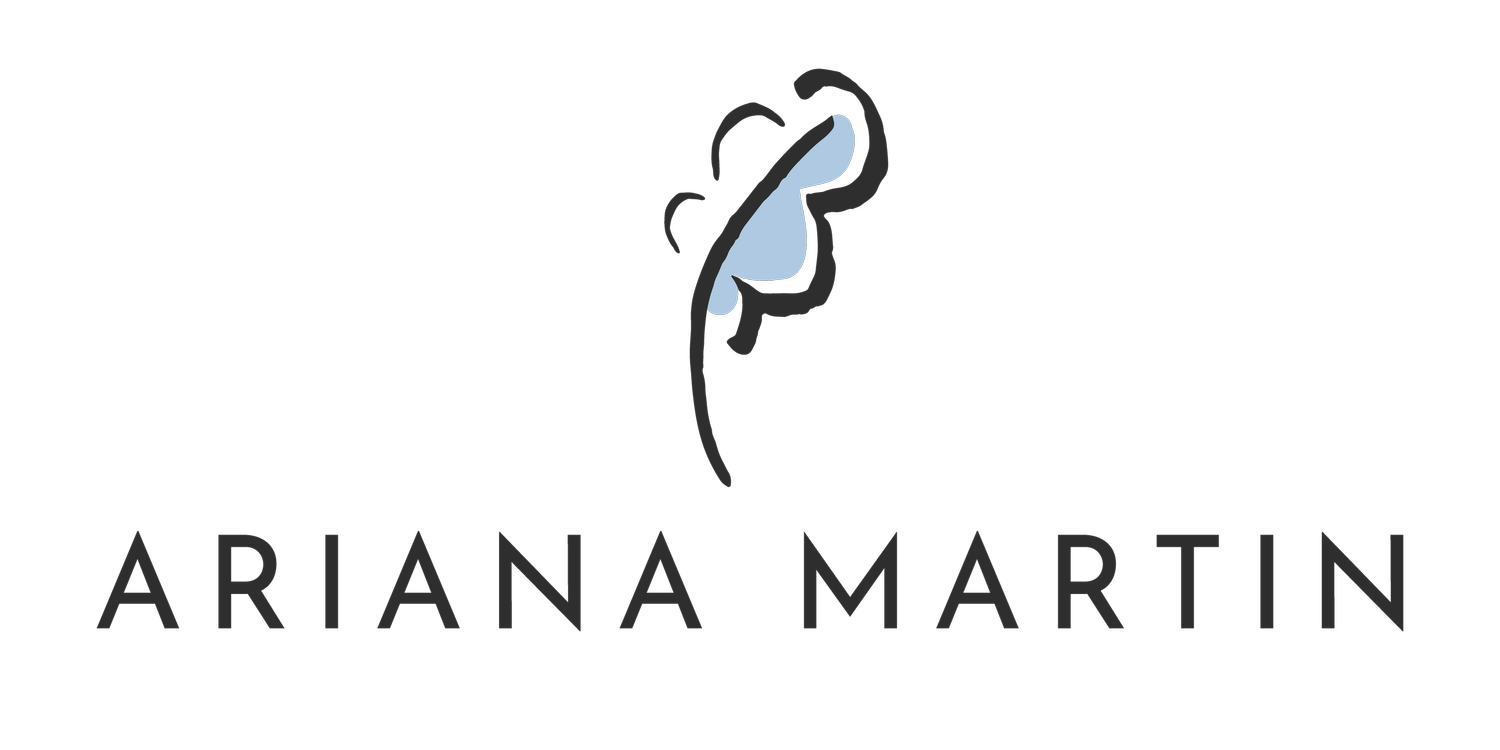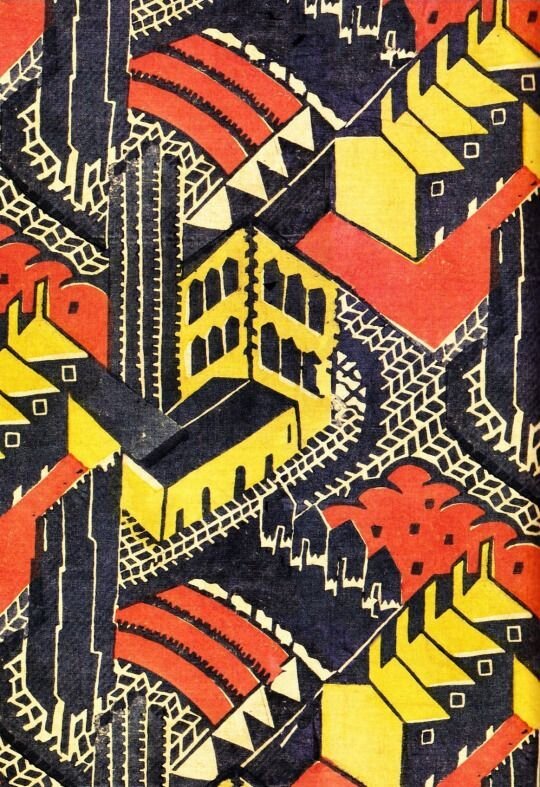FOOTPRINTS STUDIO
Footprints was a London textile printing studio active during the 1920s and 30s (so called because of the foot pressure that workers applied to the printing blocks). The firm began life in Durham Wharf, Hammersmith in 1925 and, unusually for the time, was run entirely by women. They weren’t completely alone in this pursuit - the 1920s saw a wave of middle-class women reviving the traditional craft of hand block printing and dyeing, including Phyllis Barron, Dorothy Larcher and Enid Marx.
Tylers Green, block printed silk crepe, designed by Joyce Clissold. Image courtesy of UAL
Footprints was established by art graduates Gwen Pike and Elspeth Little, then taken over by Joyce Clissold in 1929. There is a quality about their block printed textiles which is buoyant, charming and almost chaotic - often applying layer upon layer of colour. As I mentioned in my latest Spotlight On post, Paul Nash was unimpressed with the, shall we say, ‘rustic' quality of printing at Footprints.
Initially, the main outlet for the studio’s textiles was a small shop called Modern Textiles, opened by Elspeth Little in 1926 in London’s trendy Knightsbridge. The intention of both Footprints and Modern Textiles was to offer the discerning woman a place to buy fabrics and ready-to-wear garments of superior design and production (in this way it was not dissimilar to Cryséde, who I wrote about in an earlier blog post). The fabrics were elite and, due to the time it took to make them, expensive.
Left: Welwyn Garden City, block print designed by Doris Scull for Footprints, c.1930
Right: Princess Mary, block printed linen sample, designed by Joyce Clissold, 1929-35
Joyce Clissold, who had worked for Footprints whilst studying printmaking at the Central School, took over the business in 1929. She moved the studio from its premises on the river Thames to a house in Brentwood, where she could both live and work. Clissold created all the designs and carved the lino blocks, whilst the young working-class women she employed prepared the dyes and printed the fabric. It is said that the boundaries between work and domestic life were blurred, with one employee recalling: “A strong but not unpleasant smell of dyestuffs hung about the whole house and mingled with the more homely odours from the kitchen”
I find a real playfulness in Clissold’s designs, often using motifs inspired by domestic life, such as in Cupboard. Within the archive collections at UAL, you can also see various bits of ephemera that she designed, such as this joyful Christmas card (pictured below).
Left: Cupboard, block printed silk designed by Joyce Clissold, 1926-30.
Right: Joyce Clissold modelling a shawl of her own design, c.1927. Images courtesy of UAL.
Christmas card made by Joyce Clissold, date unknown. Image courtesy of UAL
In the mid-1930s she opened two Footprints boutiques - one at New Bond Street and a second at Knightsbridge - which attracted such sophisticated customers as Gracie Fields and Syrie Maugham. Here, one could buy lengths of block-printed fabric, ready-made garments such as shawls and hats or even request a bespoke garment to be cut by the in-house dressmaker, ‘Madame Blanche’ (Mrs White to you and me).
As is so often the case with these small, innovative studios, the Second World War brought things to a halt. Joyce Clissold did keep the firm alive post-war, but on a much reduced scale, and the shops sadly did not reopen. The women from Footprints haven’t gained as much acclaim as their contemporaries, but to me, their work exudes inventiveness and joy.
You can watch a short video about Joyce Clissold and her textiles held at UAL here.
Lambs, block-printed on raw silk c.1930. Image courtesy of UAL
If you’re interested in block-printing textiles studios from this period, these are three books on the subject that I really enjoy:
Modern Block Printed Textiles by Alan Powers
Barron & Larcher: Textile Designers by Sarah Burns and Michal Silver
Crysede: The Unique Textile Designs of Alec Walker by Hazel Berriman








